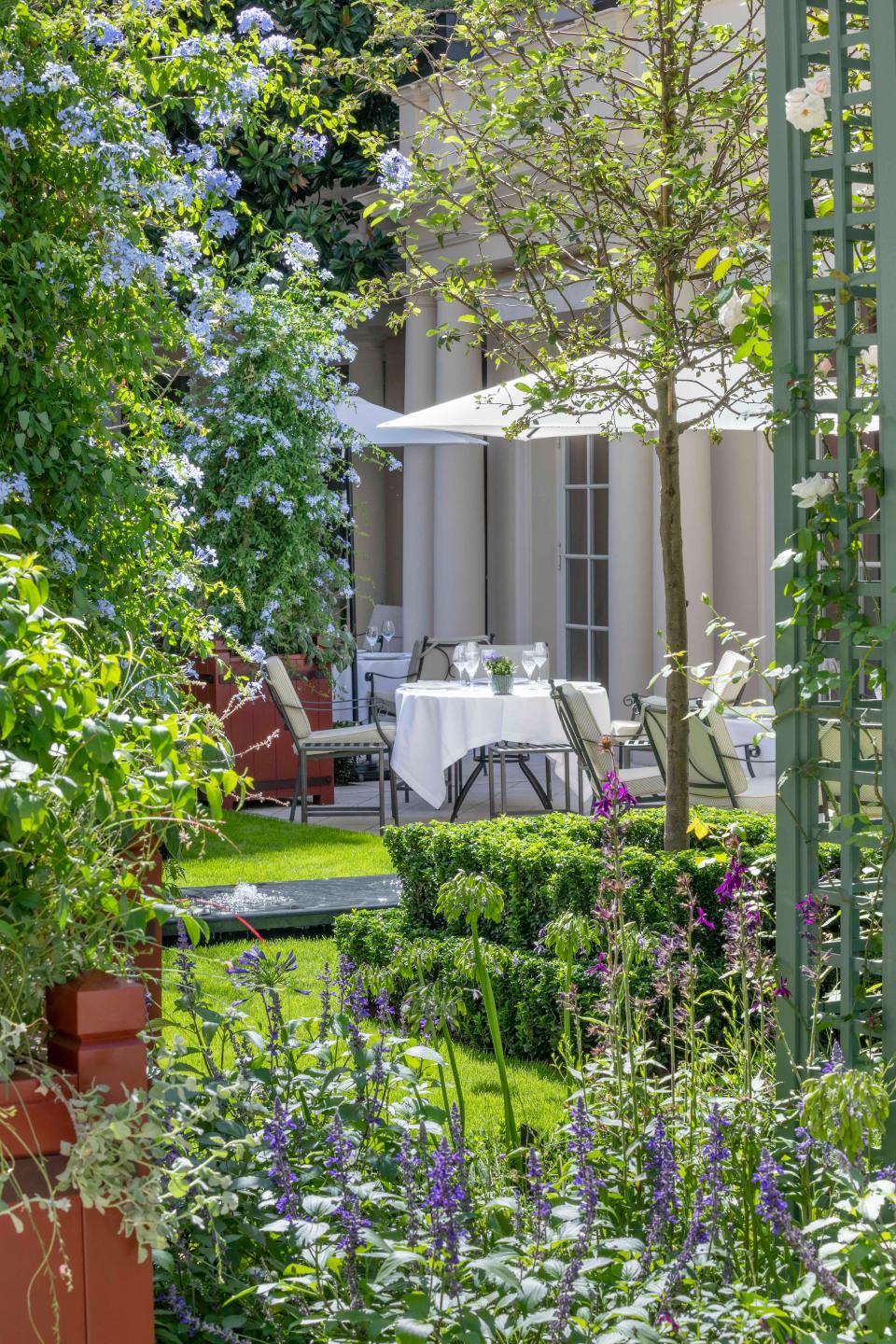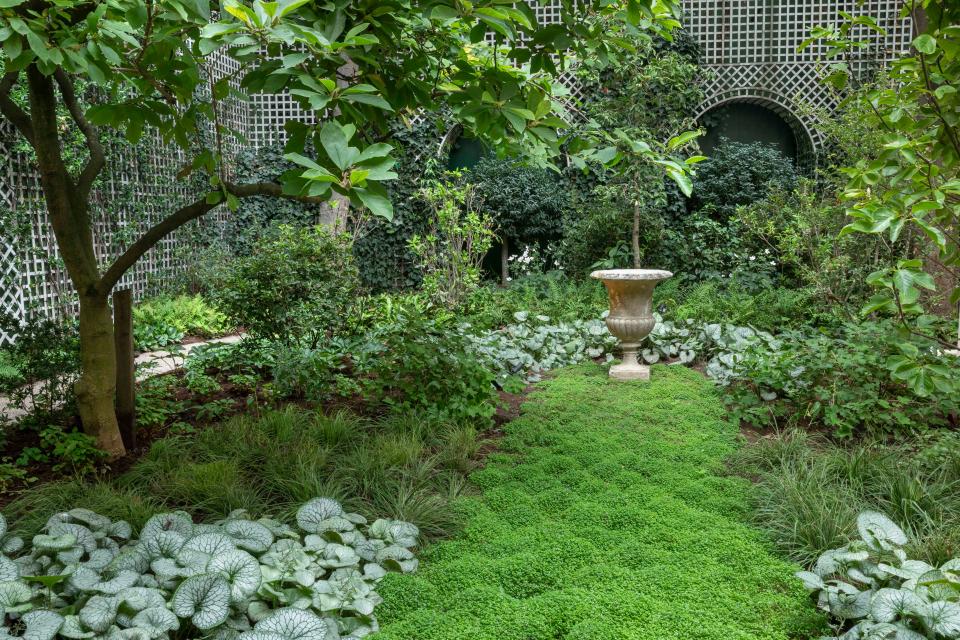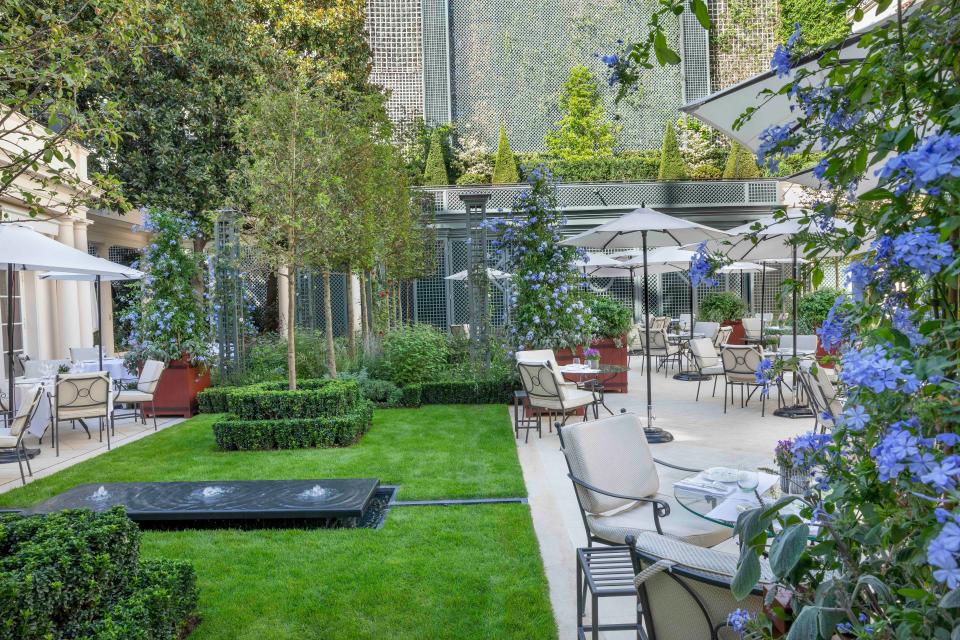Step Inside Paris’s Most Anticipated New Garden
When Le Bristol Paris reopened its doors on September 1—following a nearly six-month coronavirus closure—it unveiled the final elements of its decade-long rolling renovation. Comprising every square foot of the century-old hotel, which occupies three Hausmann-style buildings steps from the Élysée Palace, the redo reveals the delicate hand of interior designer Countess Bergit Douglas, a scion of the patrician Oetker family, the hotel’s owners.
While she and her studio, MM-Design, masterminded the serene, pastel-hued, Louis XVI–inflected décor of the 190 rooms and suites (including the newly created pied-à-terre-style Suite Lumière), three restaurants (two of them Michelin-starred) and other cosseting public spaces, Countess Douglas relied on outside help to remaster Le Bristol’s signature courtyard garden. For that, she turned to Lady Arabella Lennox-Boyd, an Italian-born British aristocrat and landscape designer whose previous projects include the grounds of Sting and Trudie Styler’s Tuscan villa, as well as gardens for Douglas and Oetker family homes.

With her design for Le Bristol, Lady Arabella looked “to get away from the usual hotel good taste, with the ubiquitous white-and-green themes,” she tells AD. To do that, she sought to bring a pastoral feeling to the space, combining formal elements like topiaries and hedges with those more typical of the gardens of a country cottage, like loose plantings and flowing grasses. Her aim, she says, “was a countryside feeling in the city.”
She kept the garden’s existing grand magnolias, but little else remains as it was. “From the beginning, I wanted to break up the courtyard with new shapes for planting beds, focal points, and a complete redesign of the treillage wall.” By doing so, she established a new geometry, both on the ground and vertically.

She painted the trellis a subtle green, to prevent it from overpowering the foliage, and selected planters in a rusty russet color, adding formal features like pleached trees and columns adorned with climbing roses. Lady Arabella also wanted to create “a sense of mystery,” she says, “so the garden cannot be seen in its entirety from any one point.” Freestanding trellis panels, also covered with climbing roses, make that possible.
The designer selected flora native to the greater Paris region or France more broadly—including Gladwin iris, hart's tongue fern, and European beech and hornbeam trees—and kept in mind a desire to attract local birds and beneficial insects, like ladybugs. “I included plants that provide shelter and nectar in all seasons,” she explains. “The garden will be colonized by nature.”

She points to two specific parts of the courtyard that she hopes people will particularly enjoy: She’d like visitors to go for a stroll in the small woodland area to one side of Epicure restaurant, where she planted many of her favorite plants, and she wants hotel guests to look out of their windows to the upper garden, which features topiary domes and two giant dogwoods, also known as wedding cake trees, which she chose for their silver-marbled leaves and tiered branches.
“Designing a garden is like painting with plants, but there is so much more to consider,” Lady Arabella concludes. “I am proud to have created a space where things are planted according to their natural habitat and flower according to the seasons.”
Originally Appeared on Architectural Digest

